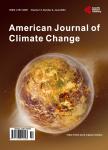Dryland Pastoralism Climate Landscape and Food Security in the Suam River Basin of Kenya
Dryland Pastoralism Climate Landscape and Food Security in the Suam River Basin of Kenya作者机构:Masinde Muliro University of Science and Technology Kakamega Kenya University of Nairobi GPO Nairobi Kenya
出 版 物:《American Journal of Climate Change》 (美国气候变化期刊(英文))
年 卷 期:2022年第11卷第3期
页 面:173-196页
学科分类:07[理学] 070601[理学-气象学] 0706[理学-大气科学]
主 题:Climate Variability and Change Dry Land Food Security Pastoralism Suam River Basin
摘 要:River basins in the drylands of Sub-Saharan Africa have traditionally been utilized for pastoral livelihoods under communal land tenure. Communities in West Pokot in Kenya have continued to experience increased precipitation and temperature as a result of climate variability and change. This study aimed at assessing the impact of climate variability and change at micro-basin level in order to address research and policy gaps on climate change and food security as policy arena shifts from centralized to decentralized governance in Kenya. Primary quantitative data was collected from 387 households’ perceptions of climate variability and change and its implications on food security were measured. Food security index score was calculated. The annual rainfall trend over Suam river basin for the period (1981-2020), was characterized by a linearly increasing annual rainfall trend. Mann Kendall test Z-statistics and Tau were at 2.3578 and 0.0720 respectively. The basin experienced the highest rainfall variability during the first decade (1981-1990) with the highest coefficient of rainfall variation noted at 11.5%. The highest temperature was recorded in the third decade (2001-2010) and fourth decade (2011-2020) at 27.0 and 28.2 degrees Celsius respectively. However, the overall index score for food security was 55.78 with food availability scoring the highest index, mean (SD) of 63.41 (36.52). This was attributed to households’ practice of both nomadic pastoralism and agro-pastoralism activities. Climate variability and change, have resulted in increased amount of rainfall received providing for opportunity investment in rain water harvesting to support both pastoralism and agro-pastoralism production to enhance food security.



